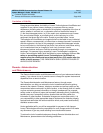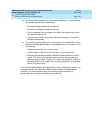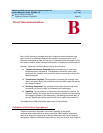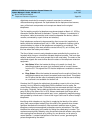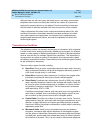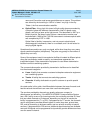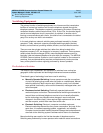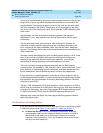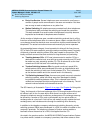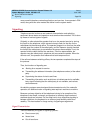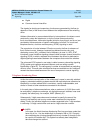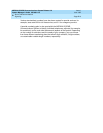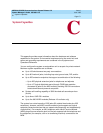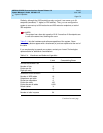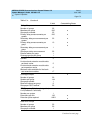
MERLIN LEGEND Communications System Release 5.0
System Manager’s Guide
555-650-118
Issue 1
June 1997
About Telecommunications
Page B-6Switching Equipment
B
of circuits at a switchboard by using cords that had plugs at each end. Each of the
plugs had a
tip
and a
ring
which completed the electrical circuit over which the
signals traveled. The operator plugged one end of the cord into the caller’s jack,
and then completed a call (that is, completed a circuit) by plugging in the other
end of the cord to the called party’s jack, one of perhaps 10,000 subscriber jacks
within reach.
Approximately 120 lines terminated at answering jacks on the operator’s
switchboard. In turn, each operator had 18 cords that could be used to make
connections.
The first automatic switch was invented in 1892 by Almon B. Strowger, an
undertaker, whose competitor was getting all the undertaking business in the
townreferred by the other undertaker’s wife, who was the town’s telephone
operator. The Strowger switch was an electromechanical device controlled by the
caller’s telephone.
Strowger’s switch was adapted for use in the Bell System starting in 1919. It was
slow, noisy, and not very flexible with respect to offering new services but,
because it was more cost-effective than human operators, it was directly
responsible for making telephone service affordable and universal.
The next innovation in electromechanical switching was the Bell System’s
crossbar switch, first installed in 1938, and still in use in some areas today. It had
fewer switches, a sophisticated control mechanism, and lower maintenance but,
like its predecessor, was not flexible because it could not be programmed.
It was, therefore, a natural progression to the idea of using a computer, with its
inherent programmable flexibility, to control the operation of the switching network
that resulted in the new generation of switching technology called an
electronic
switching system
(ESS).
The No1. ESS, developed by AT&T and installed in 1965, served from 10,000 to
65,000 lines at a maximum of 25,000 calls in the busy hour. With ever-increasing
innovations in technology, the Lucent Technologies 5ESS digital switching system
in 1983 could handle 100,000 lines and 650,000 telephone calls per hour.
Because most trunks are digital, the newer digital switching systems interface
easily with digital trunks.
The Evolution of Switching Offices 2
In the early days of the telephone network, there was little or no switching involved
in telephone service (see Figure 2–3
in Chapter 2, ‘‘About the System’’):
■ Private-Line Service. In the initial telephone installations, telephone
communication was from one telephone directly to another, as in Bell’s
demonstration that went from an instrument in one room to another
instrument a few rooms away. Thus, one telephone could communicate
with only one other telephone.



